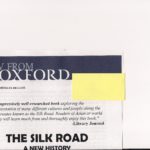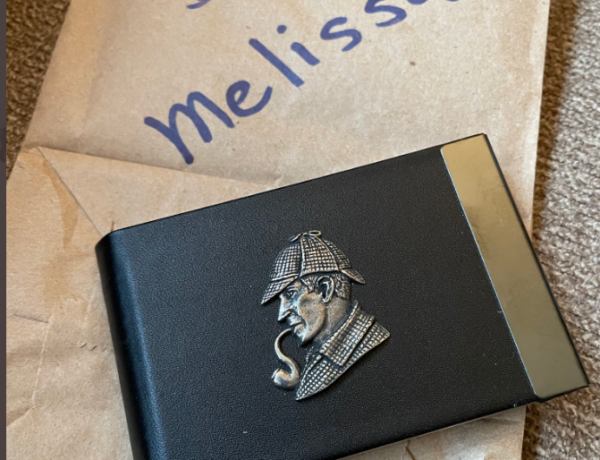Yesterday I received a finished hard copy of a book that I reviewed (I read it as a galley proof or an unedited copy). Sometimes when I review a book for a publication I receive a real finished edition, other times I receive a galley proof, and every once in a while I just get a bunch of pages stapled together (which is such a bad thing to do to a book you want reviewed). Then sometimes a finished copy makes its way to me and sometimes it doesn’t. The publishing world is an odd place.
My original review:
The Silk Road: A New History. Valerie Hansen. Oxford University Press. August 2012. 320 pages. ISBN 978-0-19-515931-8. $34.95.
The term the Silk Road has always conjured up romantic notions of silk and spices, vast deserts and inhospitable lands, camel caravans, travelers, merchants, and pilgrims traveling from China to Rome. While this is true, Hansen (a professor of History at Yale University) examines the Silk Road from new research based on the documents that were left behind by those that lived and died on this ancient cultural superhighway. Organized around the seven Silk Road cities of Niya, Kucha, Turfan, Samarkand, Chang’an, Dunhuang, and Khotan, the book takes the position that the Silk Road was made up of local and small scale trade and not the large commercial routes that it was believed to be, and more significantly it’s true importance lies in the ideas of the people (especially from immigrants) that moved east and west spreading their art, language, religion, and technology. Includes maps, images, and a index.
Verdict: An incredibly well research book exploring the documentation of many different cultures and people in the seven cities along the many routes know as the Silk Road. Readers of Asian and world history will thoroughly enjoy this book.
Melissa Aho, Bio-Medical Library, University of Minnesota, Minneapolis, Minnesota.
I cannot edit my own work. The work of others yes, but never my own. So having an good editor (or a great friend or colleague) who will clean up your work to make it sparkle (or at least make it not so dull and boring) is a good thing to have.
The cleaned up published version in Library Journal, Vol. 137, No. 11 (June 15, 2012): 87:
 Hansen, Valerie. The Silk Road: A New History. Oxford Univ. Aug. 2012. c.320p. illus. index. ISBN 9780195159318. $34.95. HIST
Hansen, Valerie. The Silk Road: A New History. Oxford Univ. Aug. 2012. c.320p. illus. index. ISBN 9780195159318. $34.95. HIST
The term the Silk Road has always conjured up romantic notions of silks, spices, vast deserts, inhospitable lands, and camel caravans, merchants, and pilgrims traveling between East and South Asia and the Mediterranean world‚ all of which is valid. Hansen (history, Yale Univ.) examines the Silk Road through further research based on documents left behind by those who lived and died on this ancient cultural superhighway. Organizing the text around the seven Silk Road cities of Niya, Kucha, Turfan, Samarkand, Chang’an, Dunhuang, and Khotan, the author takes the position that the Silk Road was made up of local and small-scale trade, not the large commercial routes that we have come to associate with it. More significant, she writes, its true importance lies in the movement of ideas (especially those of immigrants) as they moved eastward and westward spreading their art, language, religion, and technology. VERDICT An impressively well-researched book exploring the documentation of many different cultures and people along the many routes known as the Silk Road. Readers of Asian or world history will learn much from and thoroughly enjoy this book.‚ Melissa Aho, Univ. of Minnesota Lib., Minneapolis
And this was on publication literature:
An impressively well-researched book exploring the documentation of many different cultures and people along the many routes known as the Silk Road. Readers of Asian or world history will learn much from and thoroughly enjoy this book. Library Journal


